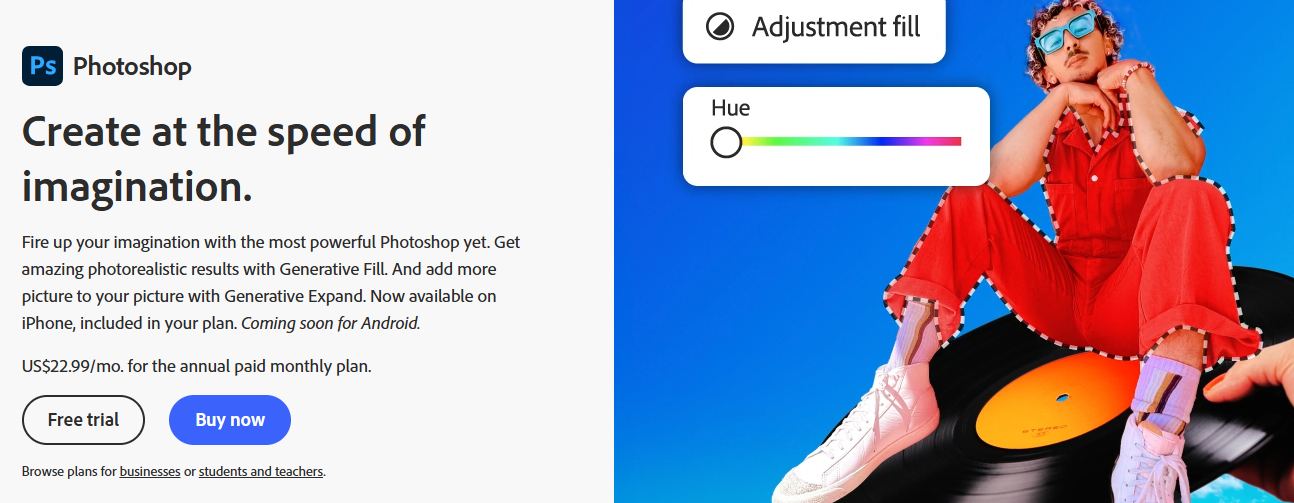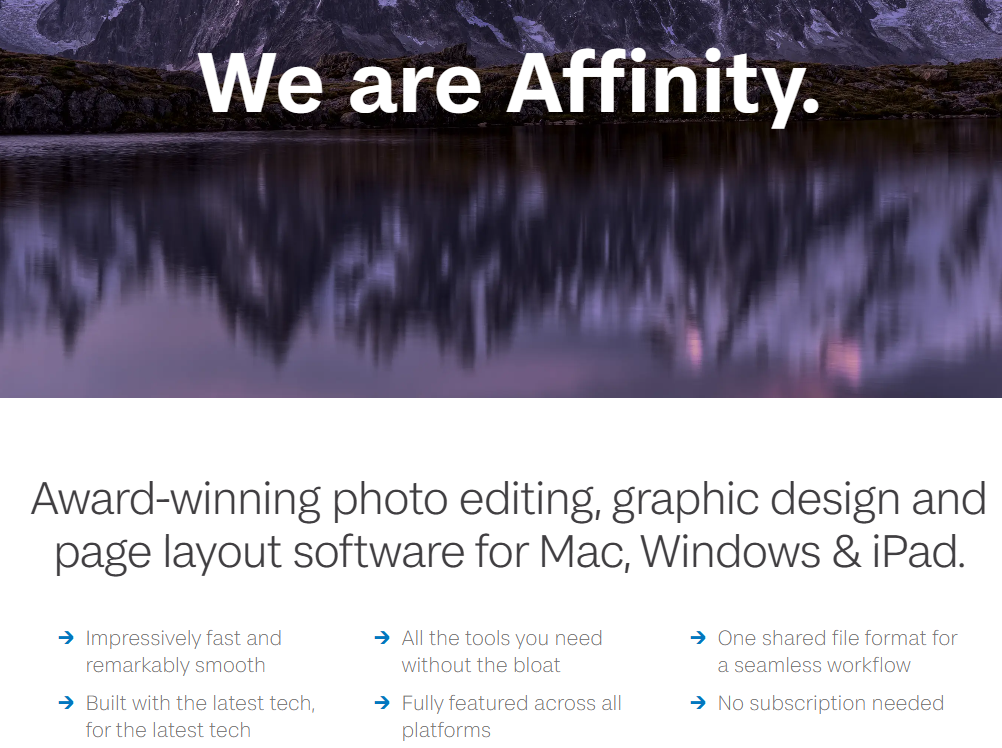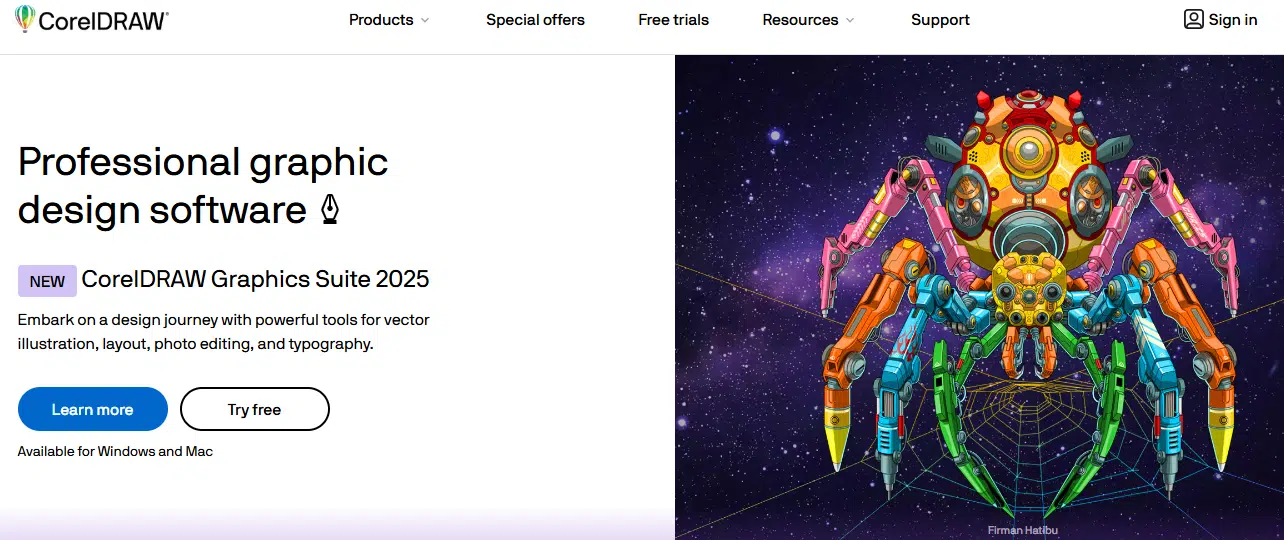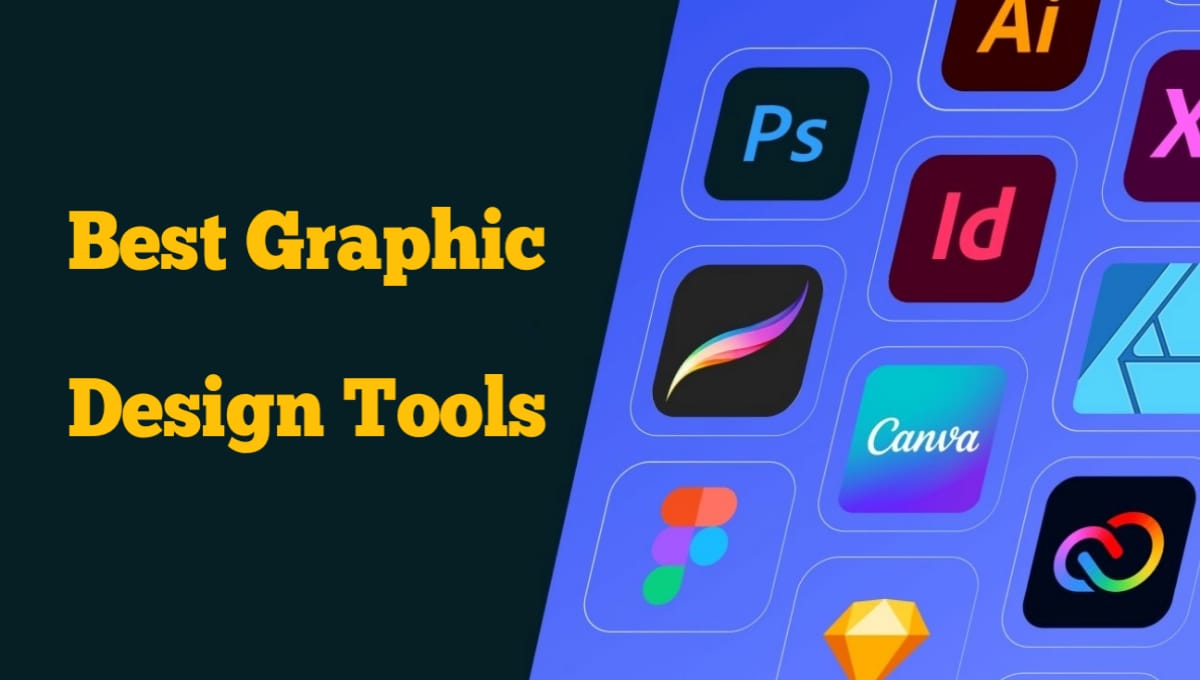Graphic design is an ever-evolving field, and having the right tools can make all the difference in creating stunning visuals. Whether you're a professional designer or a beginner, the best graphic design tools can help you bring your creative ideas to life. In this article, we’ll explore the top graphic design tools available today, their key features, pros and cons, and who they’re best suited for. Plus, we’ll provide you with exclusive affiliate links to help you get started with these tools effortlessly.
Why Are Graphic Design Tools Essential?
Top Graphic Design Tools in 2025
Here’s a detailed look at the best graphic design tools that are dominating the market this year:
1. Adobe Photoshop
Adobe Photoshop is the industry standard for graphic design and photo editing. It’s packed with powerful features that cater to both beginners and professionals.

Key Features:
- Advanced photo editing and retouching tools.
- Layer-based editing for precise control.
- Customizable brushes and filters.
- Support for 3D design and video editing.
- Integration with other Adobe Creative Cloud apps.
Pros:
- Unmatched versatility and functionality.
- Regular updates with new features.
- Extensive online tutorials and community support.
Cons:
- Steep learning curve for beginners.
- Subscription-based pricing can be expensive.
Ideal For:
Professional designers, photographers, and advanced users who need a comprehensive tool for complex projects.
2. Canva
Canva is a user-friendly graphic design tool that’s perfect for beginners and non-designers. It offers a drag-and-drop interface and thousands of templates for various design needs.
Key Features:
- Pre-designed templates for social media, presentations, posters, and more.
- Drag-and-drop editor with intuitive controls.
- Extensive library of fonts, images, and icons.
- Collaboration features for team projects.
- Free plan available with optional premium features.
Pros:
- Easy to use, even for beginners.
- Affordable pricing with a free plan.
- Great for quick designs and social media content.
Cons:
- Limited customization compared to professional tools.
- Some premium elements require additional payments.
Ideal For:
Small business owners, marketers, and social media managers who need quick and easy designs.
3. Figma
Figma is a cloud-based design tool that’s perfect for UI/UX designers. It allows real-time collaboration and prototyping, making it a favorite among design teams.
Key Features:
- Real-time collaboration with team members.
- Vector-based design tools for UI/UX projects.
- Prototyping and animation features.
- Cross-platform compatibility (Windows, macOS, and web).
- Free plan available for individual users.
Pros:
- Excellent for team collaboration.
- No need for downloads (cloud-based).
- Free plan with robust features.
Cons:
- Requires a stable internet connection.
- Limited offline functionality.
Ideal For:
UI/UX designers, web designers, and design teams working on collaborative projects.
4. Affinity Designer
Affinity Designer is a cost-effective alternative to Adobe Illustrator. It’s a vector-based design tool that’s perfect for creating logos, illustrations, and print designs.

Key Features:
- Vector and raster design capabilities.
- One-time purchase (no subscription required).
- Advanced typography and color tools.
- Compatibility with Adobe file formats.
- Regular updates and new features.
Pros:
- Affordable one-time payment.
- Powerful features comparable to Adobe Illustrator.
- Lightweight and fast performance.
Cons:
- Smaller user community compared to Adobe.
- Limited integration with other design tools.
Ideal For:
Freelancers and small businesses looking for a budget-friendly yet powerful design tool.
5. CorelDRAW
CorelDRAW is a versatile graphic design software known for its precision and flexibility. It’s widely used for vector illustration, layout design, and photo editing.

Key Features:
- Advanced vector illustration tools.
- Multi-page layout design capabilities.
- Built-in photo editing and effects.
- Support for over 100 file formats.
- One-time purchase or subscription options.
Pros:
- Comprehensive toolset for various design needs.
- Flexible pricing options.
- Great for print and digital designs.
Cons:
- The interface can feel outdated to some users.
- The steeper learning curve for beginners.
Ideal For:
Professional designers and businesses focused on print and digital media.
Comparison of the Best Graphic Design Tools
|
|
|
|
|---|---|---|---|
|
|
|
|
|
|
|
|
|
|
|
|
|
|
|
|
|
|
|
|
Pricing and Plans
- Adobe Photoshop: Starts at $20.99/month.
- Canva: Free plan available; Pro plan at $12.99/month.
- Figma: Free plan available; Professional plan at $12/editor/month.
- Affinity Designer: One-time payment of $69.99.
- CorelDRAW: Starts at $249/year or $29/month.
Step-by-Step Guide to Getting Started with Canva
- Sign Up: Create a free account on Canva’s website.
- Choose a Template: Browse through thousands of templates for your project.
- Customize: Use the drag-and-drop editor to add text, images, and icons.
- Download: Save your design in your preferred format (PNG, JPEG, PDF, etc.).
Conclusion
Choosing the best graphic design tool depends on your specific needs, budget, and skill level. Adobe Photoshop and CorelDRAW are ideal for professionals, while Canva and Figma are perfect for beginners and collaborative teams. Affinity Designer offers a budget-friendly alternative with powerful features.
Ready to elevate your design game? Click on the affiliate links above to explore these tools and start creating stunning visuals today!
FAQs
1. Which graphic design tool is best for beginners?
Canva is the best option for beginners due to its user-friendly interface and pre-designed templates.
2. Is Adobe Photoshop worth the price?
Yes, if you need advanced photo editing and design capabilities, Adobe Photoshop is worth the investment.
3. Can I use Figma offline?
No, Figma is a cloud-based tool and requires an internet connection.
4. Are there free graphic design tools available?
Yes, tools like Canva and Figma offer free plans with robust features.
5. Which tool is best for vector design?
Affinity Designer and CorelDRAW are excellent choices for vector-based designs.

